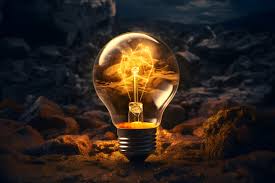LIGHT ENERGY
Light energy, also known as radiant energy or electromagnetic energy, is a form of energy
that is visible to the human eye and is responsible for the sense of sight.
COMMON BEHAVIORS OF LIGHT ENERGY
-
Light bounces back when it hits a surface like a mirror (Reflection).
-
Light changes direction when it moves through materials like glass or water (Refraction).
-
Light is soaked up by objects, turning into heat or other energy (Absorption).
-
Light moves through clear materials like glass or plastic without stopping (Transmission).
-
White light spreads into many colors, like in a rainbow, when passing through a prism (Dispersion).
-
Light bends and spreads around the edges of objects or small openings (Diffraction).
-
Light spreads out in all directions when it hits tiny particles in the air or water (Scattering).
IMPORTANCE OF LIGHT ENERGY
-
Light helps us see objects and our surroundings.
-
Plants use sunlight to make food, providing energy for life.
-
Light supports the growth of plants, which are essential for food and oxygen.
-
Light is converted into electricity using solar panels for power.
-
Light is used in fiber optics for fast internet and communication.
-
Sunlight helps our body produce Vitamin D, keeping us healthy.
-
Light illuminates streets and homes, preventing accidents and danger.
-
Light aids in guiding ships, airplanes, and cars at night or in darkness.
-
Light is essential in photography, film, and stage lighting for creativity.
-
Light energy, like sunlight, provides warmth for the Earth and living beings.

